Today I’m republishing an essay that was published by The Audacity on June 30, 2021. It’s now behind a paywall and I wanted to share it since I’ve had more subscribers join. It remains one of my favorite pieces of my own writing.
I think about this essay a lot, and though my writing has evolved since this piece, I stand by my thesis. There is still a voracious, sympathetic appetite for white women loudly suffering. Though the reference points in this essay are from 2020, it’s pretty easy to swap in movies from this past year. You can even switch Florence Pugh’s screaming breakthrough performance in Midsommar (2019) for her much less compelling screaming bit in Don’t Worry Darling (2022).
There is much, much more to say about screaming, and the directors who have rejected the screamer trope, but for now, I’ll just leave you with my original Scream Gap essay. Enjoy.
When the second season of Big Little Lies aired, it seemed like each episode had a viral moment ripe for giffing—Laura Dern screaming that she would “not not be rich,” Meryl Streep terrifying Nicole Kidman with a sudden howl of agony. When Midsommar premiered soon after and the image of Florence Pugh wailing into the hands of another woman became a meme, the scream was codified. This was a new type of scream: a capital-s Scream that acknowledged not only a recent injustice but an accumulation of the tremendous pains and burdens women silently bear. A Scream that exposed the depth of one’s emotional range and threatened to disrupt, if not destroy, the polite veneer of a quietly oppressive society. The Scream is a signal to the audience, more so than the other characters, that the Screamer has found something fundamentally, deeply wrong with their surroundings. Of course, these Screams were issued by white women, and not just any white women but fancy, feminine, well-dressed white women, their wigs coiffed and nails manicured.
Anyone with a passing interest in horror is familiar with the “scream queen” label, a term used to describe a young actress who appears primarily in slashers. The mother-daughter pair of Janet Lee in Psycho and Jamie Lee Curtis in the Halloween series are perhaps the most notable examples. Curtis is also the prototype for the “final girl,” the young woman who survives an onslaught of male violence against all odds. The scream of the scream queen in these movies is a necessary part of the genre: it’s not only a plot device that warns other characters about an incoming horror but also a primal demonstration to the audience of the protagonist’s utter terror.
Female survival in slashers is often mistakenly interpreted as empowerment—see Melissa Lafsky Wall calling Scream 4 “the first mainstream feminist horror film” in The Awl or the inappropriately triumphant ending of Invisible Man (2020), where Elisabeth Moss enacts some stoic, ironic revenge against a man who has abused her and murdered her sister. Whether the final girl or not, women generally serve a specific purpose in the horror genre: as objects to be lusted over and tortured brutally. While there are plenty of men who make their living performing in horror movies, there’s no male equivalent for the scream queen. The horror genre’s roots in explicit violence against women run so deep that male-on-female brutality seems a matter of course, as inevitable and essential as a happy ending in a romantic comedy. The Scream is the natural accomplice for on-screen violence. If we use the logic that a horror movie is feminist when a woman fights back and survives, then her accompanying scream is also feminist, an act of defiance against a male perpetrator.
A white woman screaming is a trick we are unable to stop falling for. Right after the summer of Big Little Lies and Midsommar was Tropical Storm Karen, and the Internet nickname for a type of entitled white woman began to enter the mainstream. Putting Karens under a media spotlight did not diminish or distribute the power white women have by virtue of their tears. While Black women must spend our lives avoiding any semblance of anger, lest it make white people uncomfortable and label us dangerous, the white woman scream is a power-up. There is a stark gap between the demonstrations of emotion publicly permissible by white women and those permissible by Black women, which I’ve come to think of in film as the Scream Gap. It’s no coincidence that the media I’ve listed above are all written by white men, the people most susceptible to the Karen routine. The white Scream is the quickest way to garner an audience’s empathy while simultaneously proving every tired cliché about female hysteria.
But the scream, as male screenwriters see it, is a gift to actresses. It’s a guttural moment for the reel, for Twitter, for press packets, cathartic for both characters and audience. It’s an inch closer to the type of Great Acting for which men win important American awards, which is to say, Big Acting. Joaquin Phoenix’s technicolor bit in Joker or Sam Rockwell’s racist, volatile cop in Three Billboards Outside Ebbing, Missouri is what wins Academy Awards. Their more muted performances in international films like You Were Never Really Here or Moonreceived acclaim overseas, but in American Filmmaking it’s big, explosive performances, often accompanied by an extreme body transformation, that get major awards and minor Internet buzz in the shape of Twitter memes and TikTok duets. In this genre of film and performance, actors dominate, actresses react. If you missed the conversation surrounding Anna Paquin in The Irishman and Margot Robbie in Once Upon A Time In Hollywood, you can look at statistics of the highest-grossing American film and see how rarely women show up on screen, much less get a chance to speak. And again, it’s white women who get the vast majority of the roles and the lines.
A scream feels gritty and modern. It’s a shorthand for a progressive understanding of the quiet burden of emotional labor and the mental load women carry. It lends a touch of authenticity to a male writer’s screenplay. Ari Aster’s films Hereditary and the previously mentioned Midsommar both received accolades for the lead protagonists’ explosive performances. Both Toni Collette and Florence Pugh have had their screaming visage immortalized on enamel pins from A24. It’s no surprise that Aster has named Roman Polanski’s Rosemary’s Baby as an influence on his work. Rosemary’s Baby is one of the clearest, most misguided examples of how eagerly the feminist label is applied to any film about female suffering, as a 2018 Vanity Fair article did while downplaying Polanski’s own violent misogyny. It’s a movie that seems to understand, even sympathize with female anxieties and exhaustion, culminating famously in Mia Farrow’s eye-bulging howl, “What have you done to its eyes?” And it is, of course, written and directed by a rapist and child predator who received acclaim for a type of thoughtfulness in his art that he never demonstrated in his life. The scream is not the inevitable result of a woman exhausted by the male gaze. It’s commodified proof of the limited imagination of male screenwriters to express women’s emotions, a reminder that at the end of the day we are still, in the eyes of men, innately hysterical.
There are plenty of grotesque examples of histrionic Black women in cinematic history—one needs to only google “angry black woman” to get a devastatingly precise image of how white America views us—but a true scream by a Black woman is rare in mainstream media. If the white Scream acknowledges the pain inflicted on white women by men, a Black scream would be an acknowledgment of the pain inflicted on us by all of white society. And it would be an unusual indulgence in screen time for a Black actress. Support the Girls ends with Regina Hall Screaming on a rooftop with her two young employees, but it’s Haley Lu Richardson who is closest to the camera in the final shot, even if her initial Scream is closer to a party girl woo. Richardson is the waitress of male fantasy—white, bubbly, eager to listen, and totally into the male customers at the Hooters-esque restaurant where they work. It’s the Black waitress, played by actress and rapper Shayna McHayle, who has to help her scream, a quick but pointed moment where she acts as a guide to Richardson’s emotional journey. If anyone should be furious, it’s Hall, who’s spent the entire movie taking care of needy white people, and indeed much of her career taking a backseat to lesser white actors, but it’s the midriff-baring white girl who takes up most of the shot.
In the last year alone I’ve seen so many Black girls terrorized in horror movies for the sake of the development of white characters and storylines. Why doesn't Holly Bergman—the Black character whose brutal murder by police opens the film Possessor—get a chance to mourn, to cry, to scream? Where is the emotional outlet for Celeste O’Connor’s Black teenage character in Freaky, who seems to only exist to help out her white best friend and receive some of the worst violence in the film—including a gun threat by a cop? I return to Invisible Man, where Elisabeth Moss gets her girlboss revenge moment but Sydney, the Black teenager who is also attacked by the killer trying to get to Moss, gets no such catharsis.
Sometimes when I see these characters, I wonder if anyone else is seeing what I’m seeing, if they are not as perplexed by the shockingly, almost cartoonishly, callous treatment of Black women—often Black girls. But while mainstream cinema has bought into buzzy conversations about representation and diversity on screen, it has not separated itself from a desire to center whiteness at any expense. Black women might get a few more lines on screen—there might even be an oblique comment on structural racism or police brutality—but so often their role is to guide the white protagonist towards some type of emotional clarity.
Maybe it’s my ego that makes me initially react more often with confusion than with disgust. I assume that my experiences and reactions are universal, that everyone watching this movie is as interested in seeing compelling Black female characters as I am. But what is repeatedly confirmed to me when I watch a film is that while I am able to recognize the humanity of characters who are unlike me, there’s no such expectation for white audiences. When I think about all of the times in my life I have most wanted to scream and been unable to—when a boss or an acquaintance or a friend’s boyfriend said or did something racist—what I remember most is not anger but loneliness. The sensation of being one unhappy Black face in an otherwise jovial white crowd. No one else vocalized their empathy then. Why should I expect them to vocalize their empathy now, when the victim is a fictitious stranger on a screen?
A woman’s cinematic scream serves a dual purpose. While the scream might stake its claim as a feminist war cry, it’s also a confirmation of the anxieties men have always expressed through cinema about the inherent nature of women as unpredictable, volatile, and irrational. It’s Heather Donahue who won the Razzie for her frantic performance as Heather in The Blair Witch Project (1999), even though her male co-leads were equally overwrought and objectively less reasonable. The meme of a crying white woman screaming at a cat has circulated stripped of its original context: an argument in the Real Housewives of Beverly Hills where socialite Taylor Armstrong confronts another cast member for gossiping about the domestic abuse Armstrong survived. Heather and Armstrong are not the well-heeled women of Big Little Lies. Both women are unashamedly demanding and ambitious. Heather dresses plainly and practically, while Armstrong’s femininity is overshadowed by the obvious trashiness of the Real Housewife aesthetic. Their anger is neutralized as a joke they aren’t in on, put forth as just another cultural example of female hysteria. No matter how justified the woman’s scream is, there’s always the undercurrent that the bitch was crazy all along.
It’s worth noting that most successful female writers don’t rely on the scream. In Saoirse Ronan’s “women...” monologue in Little Women where she expresses her exhaustion with misogyny and her unabideable loneliness, she talks through her crying and shaking. Michaela Coel runs the gamut of human expression in her series I May Destroy You, conveying her pain through yes, shouting and crying, but often through single stares or a sharp piece of dialogue. Neither Constance Wu nor Jennifer Lopez put their hands on their hips and yell in Hustlers. Both Tessa Thompson’s Ollie in Little Woods and Carey Mulligan’s Cassie in Promising Young Woman are punishingly flat in their line readings, modulating their voices to be colder when dealing with violent men. Phoebe Waller-Bridge’s Fleabag doesn’t scream. Neither do the protagonists of Portrait of a Lady on Fire nor the women of Kelly Reichardt’s Certain Women.
These women all get angry, and why shouldn’t they? There’s no list of adjectives that will sufficiently explain the depths of indignity that women, especially Black women, spend their lives quietly dealing with. We know a scream does not better our circumstances; we know a scream only confirms what men think of us. Michaela Coel cannot scream when her bosses ask why she hasn’t been able to efficiently finish her book while dealing with her ongoing rape case. When Coel publicly names and denounces one of her rapists, she stays measured, almost hauntingly calm. What Coel knows is that catharsis is not the end. If she smashes a plate in anger, she will be the one to clean it up, dispose of it, replace it. The work women do to manage our own, and others’, emotions does not end simply because we want it to. Perhaps for the white women who scream, there’s someone even lower than them to help offset their frustration—a nanny, a maid, anyone who can temporarily relieve some material pain. To scream is a luxury only afforded to white women, and even then there’s only so much carrying on that is permissible in a society eager to label any women as crazy.
Watching Michaela Coel in I May Destroy You was particularly revelatory—not just because it was a nuanced and beautifully told story about consent and assault but because it was an entirely singular and specific portrayal of Black womanhood. The show was created, written, co-directed, and produced by Coel, and the strength of her auteurship is why the show felt so vividly realized. These portrayals are rare, even as there’s an increased spotlight on female storytelling. It’s white women who take up most of Hollywood’s small space for female writers and directors and white women who get the major and bit parts in both male- and female-centered films.
And yet as I lament the limited emotional range for women in men’s screenplays, I can’t help but feel dismayed that Black actresses don’t ever get to have their scream. Just as an over-the-top performance is a rite of passage for an actor, the scream feels like a trendy new confirmation of an actress’s bona fides. Viola Davis—who, lest you forget, is one of a handful of actors to win an Oscar, an Emmy, and a Tony for performances both hyper realistic and melodramatic—has spoken at length about being underpaid and unacknowledged. To quote Davis herself, she has a career comparable to Meryl Streep, Julianne Moore, or Sigourney Weaver and yet receives a fraction of the opportunities these actresses do. The odds are stacked against us, as exemplified by who gets to scream in Big Little Lies. Zoe Kravitz is the slightest of the “Monterey Five,” both in screen-time and in characterization. She facilitates the other characters’ arcs, offering Reese Witherspoon a scapegoat for her jealousy, releasing Nicole Kidman from her abusive marriage and Shailene Woodley from her trauma. Her interiority and backstory are only useful as perceived through the gaze of her white conspirators, the racial ramifications of her role in a murder and its subsequent cover-up are never explored. The scream gap ensures that the white women get the big, soapy beats of the show—and the accompanying buzz—while the Black women who guided them to that moment are offscreen.
This is not to say that there aren’t juicy, emotional roles for Black actors. In fact there’s a whole genre of movies about Black pain that can reliably secure funding and win Black people awards, even in predominantly white awards seasons. A few recent and acclaimed examples varying in both degrees of quality and Black involvement are Them, Harriet, Waves, or Green Book. The worst of these movies force Black characters to remain steadfast as injustices pile up, forgiving all who trespass against them. Both the scream and the Black Pain genre, to different extents, are commodifications of pain as imagined by a generally male, generally white production team.
In film, the scream presents an opportunity for white women to regain control. There’s no power to take back for Black women. We never had it in the first place. I am hopeful that the scream will be a footnote in male-written and male-directed portrayals of women and not a resting point—the scream is a step in how men culturally understand how women endure public oppression and private frustration. If the scream becomes a go-to expression not just of emotion but of “Good Acting,” it flattens acting as an art form and leaves even less space for Black actresses and other actresses of color. I don’t know how this limited emotional imagination can include non-binary and gender-fluid actors, who are rarely allowed to portray any type of emotional arc, much less one that encompasses rage and righteous frustration. As I often am in my personal life, I am hopeful that men will change, though I am not particularly invested. I am more confident that an increase in female writers will mean a diversity in the types of women on film and the display of emotions permitted to them, that the women I’ve listed above will receive the attention that has too long lingered on lesser male writers, and that they will change the shape of the canon to embrace the many types of female storytelling it has often excluded.

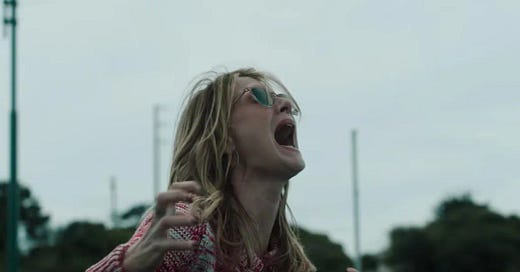



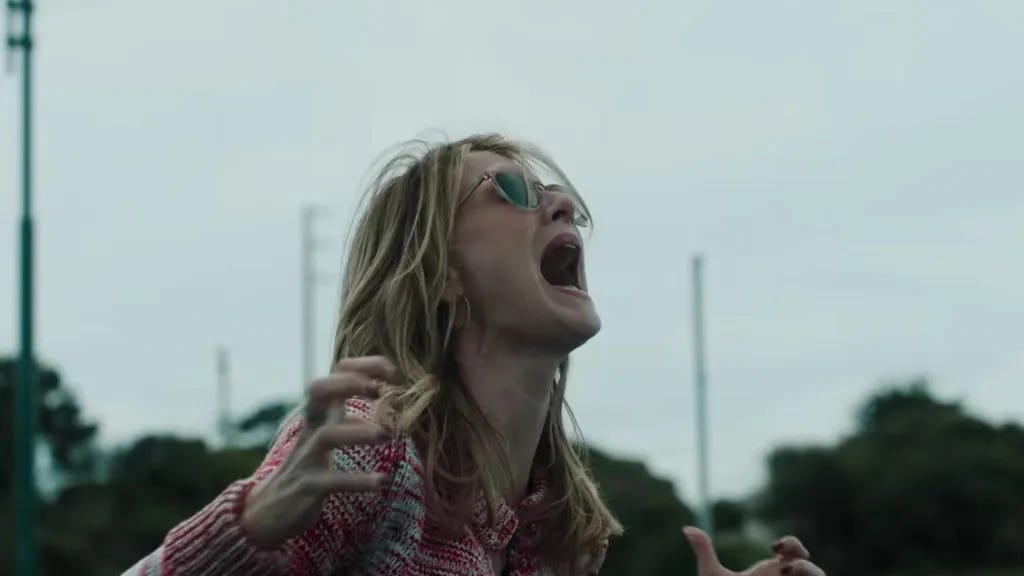
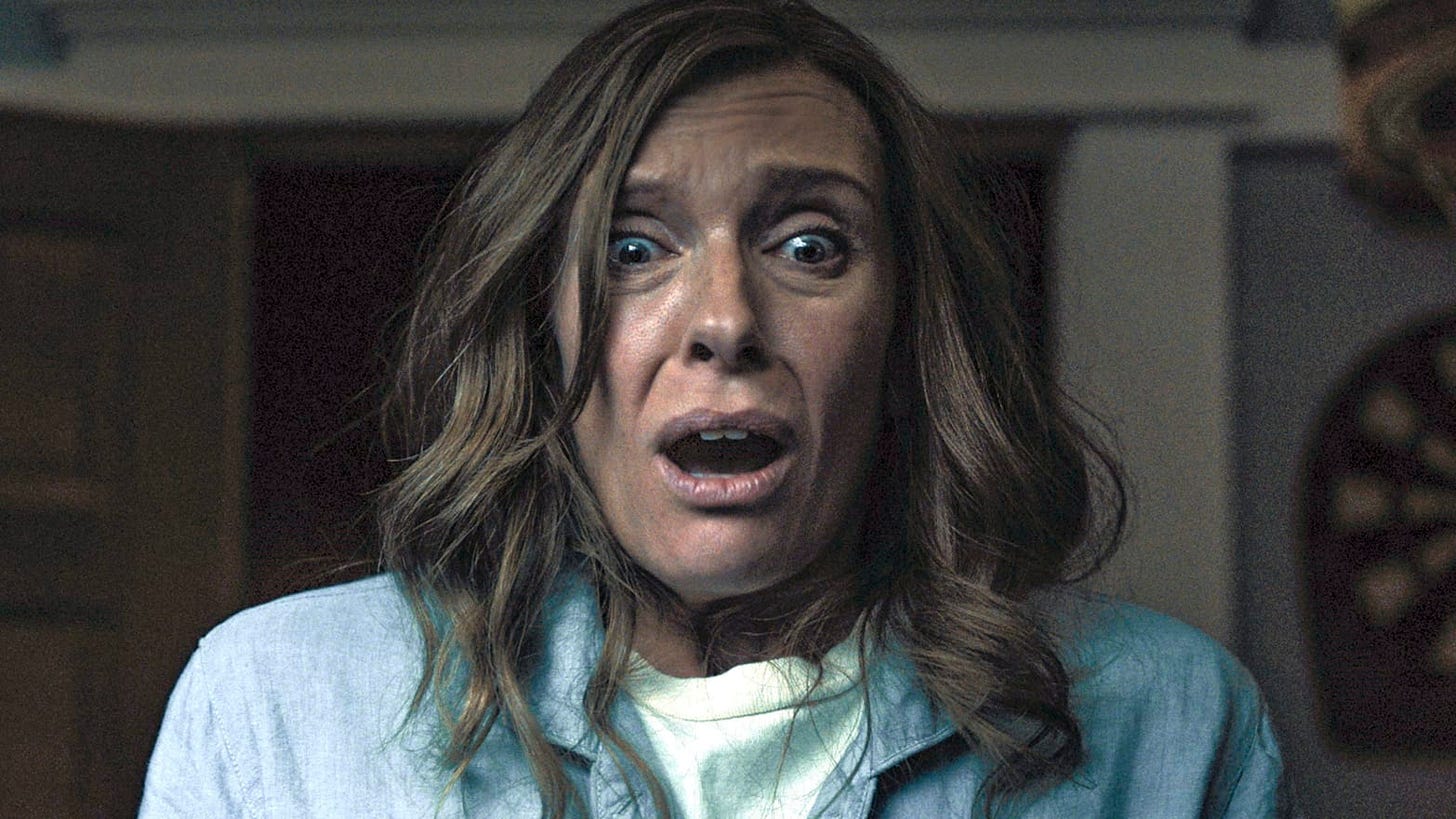


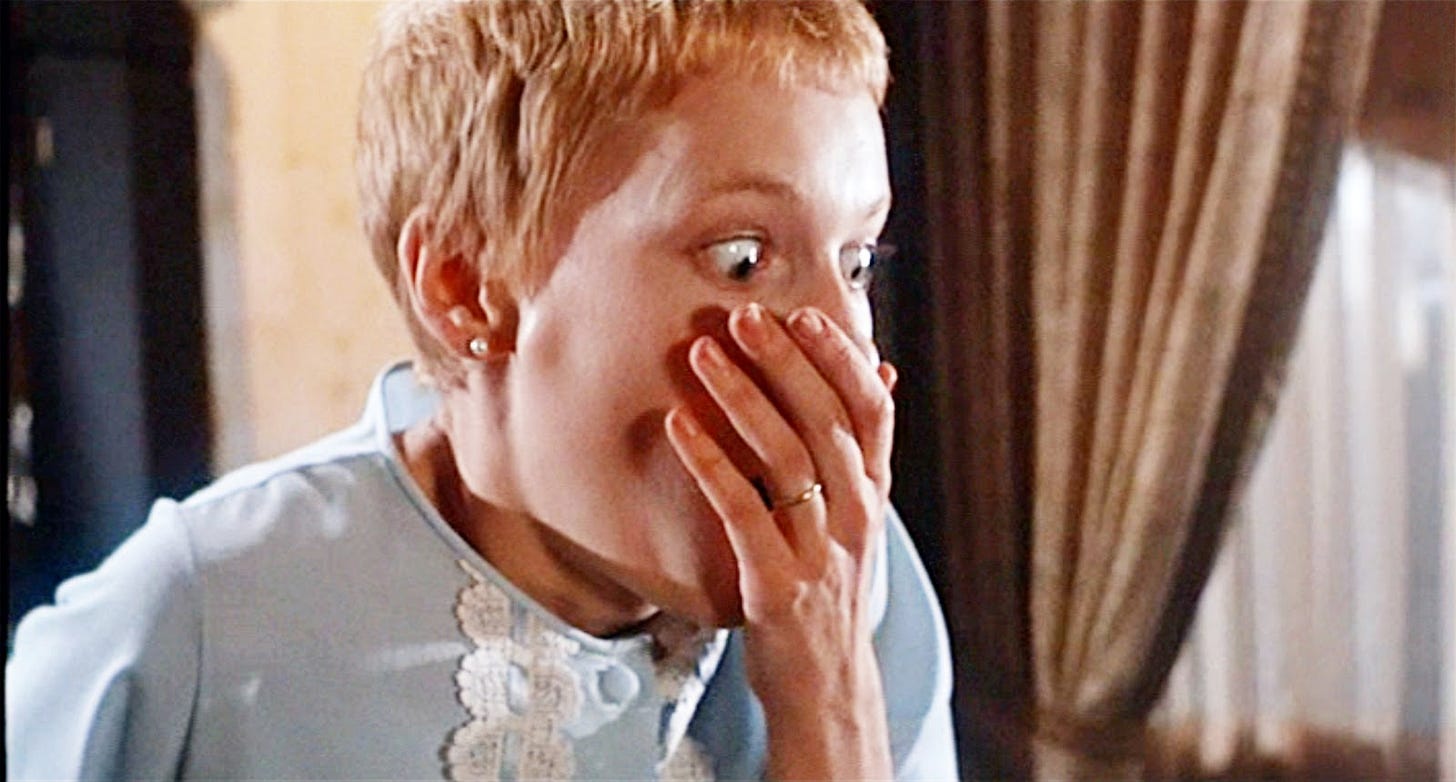


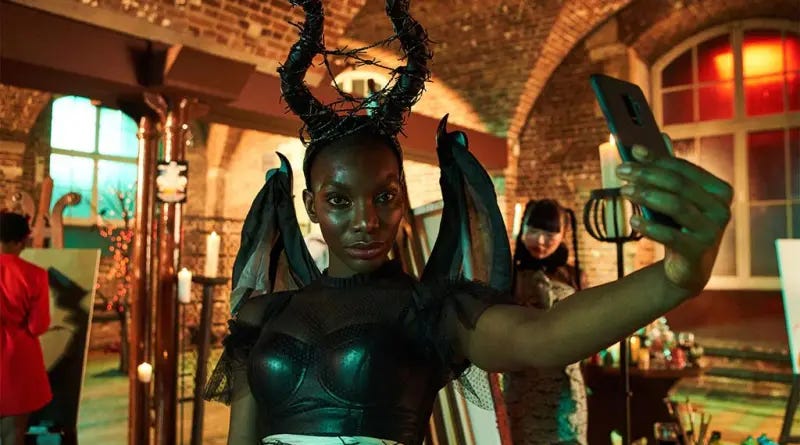
Stellar, Celia!!!!
Thank you so much for sharing this piece.